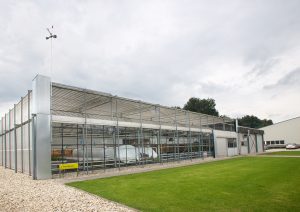
A sustainable model for agricultural research and education
Sustainability is not about maintaining the status quo. By Kyra Rensburg.
“Universities are not in a bad place, but I think they can and should be better, and going forward they have to be better,” said Prof. Danie Brink, dean of the Faculty of AgriSciences at Stellenbosch University.
“There’s a huge global dimension of transformation within higher education and when I talk about that transformation process it deals a lot with research and education, which is our core business.”
Research is shifting from a single-discipline focus to an inter- and multidisciplinary focus. Previous research models looked only at academic outputs, but this has changed to include social and economic impacts.
Education models have seen a similar shift from knowledge-based education to developing student abilities such as adaptability to future challenges in the workplace. The educational method has also changed — even before the pandemic, universities started adopting a hybrid model, which has been fast-tracked since 2020.
Declining government support
“The percentage of revenue that Stellenbosch University has received from the government as part of its full budget in 2002 was nearly 52%, and in 2020 it was only 36%, in real terms,” said Brink. “And that includes education and research.”
According to Brink, the budget for research at the postgraduate level is being used to fill the gaps in the undergraduate environment. The National Student Financial Aid Scheme is an example of a shift in funding to support undergraduate bursaries at the cost of postgraduate bursaries and research support.
In the future, universities’ ability to increase student fees will be regulated by the government. Aside from the state’s contribution, 27% of research contracts are from international networks and local industries and programmes.
“What has been brought forward by this scenario is purposeful partnerships,” said Brink. “We need to embed ourselves in international research networks.”
Brink also emphasised the importance of collaboration with local stakeholders and the agricultural sector. The university sees sustainability as an alignment between education and research linked to impactful community and industry engagement.
Sustainability engages stakeholders
“We have to maintain a sound education, our research has to be relevant, and stakeholder engagement has to be meaningful,” said Brink. “For a university to be sustainable it has to closely and carefully manage input and income, and to balance that against the outputs and the impacts.”
Universities also need to improve their agility to balance stakeholders, research, and education. It is important to clarify the roles of the university and industry in the context of education. Brink believes stakeholder engagement is critical to ensure that universities are aligned with stakeholder needs.
According to Brink, sustainability in education depends on each party understanding the other party’s commitments and responsibilities, and whether they can marry those objectives according to the principles of funding, curriculum development and alignment, and continuous learning.
In a sustainable model, universities will provide the core funding for staff, infrastructure, and general bursaries for teaching. Industries will provide complimentary funding, such as for expert inputs and targeted bursaries.
Updating the educational model
Brink explained that universities will move towards the generalisation of undergraduate curriculum development to reduce costs, while industry will assist in providing specialisation at the postgraduate level.
However, Brink warned of potential challenges, as this model is designed for developed economies where students are fully funded and supported so they can stay the undergraduate course and continue to postgraduate studies.
It will be challenging for South African universities to adapt to this model as more than 70% of our students exit at the undergraduate level. There is also a growing need for structured internships that develop students’ practical workforce skills while they are studying.
Brink said that continuous learning has become a part of the hybrid learning model. This allows universities to explore new knowledge markets in distance learning, offering career-long learning opportunities to their alumni and new entrants. It is a shift from the past, where a degree would remain relevant decades later.
Greater cooperation between faculties with a shared focus, such as agriculture, science, and engineering, as well as with stakeholders, will help to achieve continuous learning after students graduate.
“I think there is good complementarity between higher education and industry’s needs for the future,” said Brink.
Structured partnerships in research
Sustainability in research follows similar principles to education. Universities will be responsible for core funding of staff and infrastructure, and stakeholders will provide co-funding. Key university focus areas are academic progress and outputs, whereas industry focus is on the economic effect of research.
“If we look at the future model of research and education, we are already halfway there,” said Brink, “but it is going to become a far more structured partnership between our stakeholders and the university, between yourself as an industry and the university. You’re going to ask hard questions and we are going to become better.”
There must be a value proposition for both industry and universities. For this value proposition to be fulfilled it must work from both sides. “On all levels of our relationships with partners, we need to better understand our collective roles and responsibilities,” said Brink.
Brink believes that institutions and industry cannot achieve everything alone, but that they must work together. Sustainability of education and research is possible for South African universities, but it will depend on integration, alignment, and participation.
Image: From left to right: Dr Andrew Shaw, Transnet; Hein Coetzee, Topfruit; Angelo Petersen, Hortgro director; Prof. Danie Brink, Stellenbosch University. Supplied by Echo Media.






